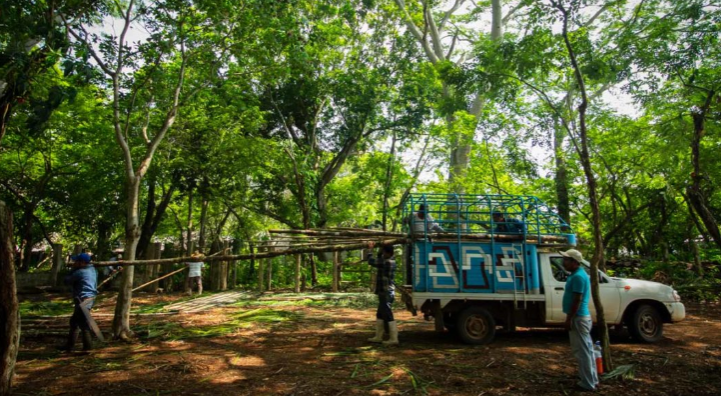
“Trifecta designed for the dispossession and subjugation of territory”: CECCAM
By the editorial office at La Coperacha
The program Sembrando Vida or “Sowing Life,” together with the TransIsthmus Corredor and the Mayan Train, “can be considered a trifecta designed for the plunder and subjugation of territory”, an investigation about the impacts of said programs and megaprojects points out.
The 40-page document, prepared by Daniel Sandoval Vázquez and presented by the Center for Studies for Change in the Mexican Countryside (CECCAM), indicates that these projects are closely linked to each other.
With regard to the Mayan Train and the Trans-Isthmus Corridor, it stands out that [the projects] will enable investment and profit in the short term, but that will mean “effectively seizing possession of the land from the original populations” and “depriving (robbing) them of the capacity to decide on any future use of the resources in general.”
Furthermore, it continues, through large-scale urban and industrial development and exploitation of the population, it will continue to separate [the people] from their creative labor in connection with the land.
At the same time, the Sembrando Vida program comes into play in thes people’s decisions to accept official provisions, he says. Testimonies from different locations have shown that the program alienates communities from their ability to exercise free consent.
In mapping the relation between the sites where Sembrando Vida is implemented and the new lines of the Mayan Train, the “factional use” (partisan or divisive use) of the program so that the population gives up their land has been documented, he says.
“Seen together, the design of these projects is indeed a reordering of the territory, but one which has the main mission of re-purposing and subjugating the form and content of traditional social life belonging to the original peoples”, he says.
The document concludes by highlighting the demands, made by the communities on the State and its institutions, that other types of projects are designed and implemented by the communities themselves.
“It has been proposed to the National Institute of Indigenous Peoples (INPI) that the government not arrive with its previously elaborated solutions, but that it bolsters the collectives in supporting and establishing what needs to be done in their regions,” he says.
This article was first published in Spanish in La Cooperacha on the 7th of May, 2020. https://lacoperacha.org.mx/sembrando-vida-sirve-despojo-igual-tren-maya-corredor-transistmico/?fbclid=IwAR0mrPTfIsa0r1nZXQw-FrnARjosS9VtnU6Xrz785YkzjgBJQ1aq6fW5pq0. This English interpretation has been published by Schools for Chiapas.
The full report (in Spanish) to which this article refers can be found from the Center of Studies for Change in the Mexican Countryside. http://ceccam.org/sites/default/files/Completo.pdf
